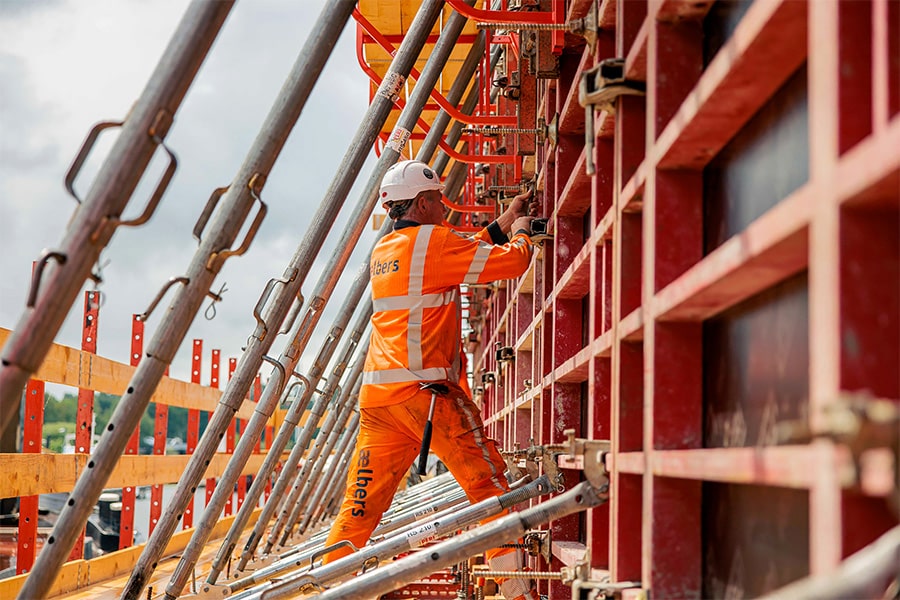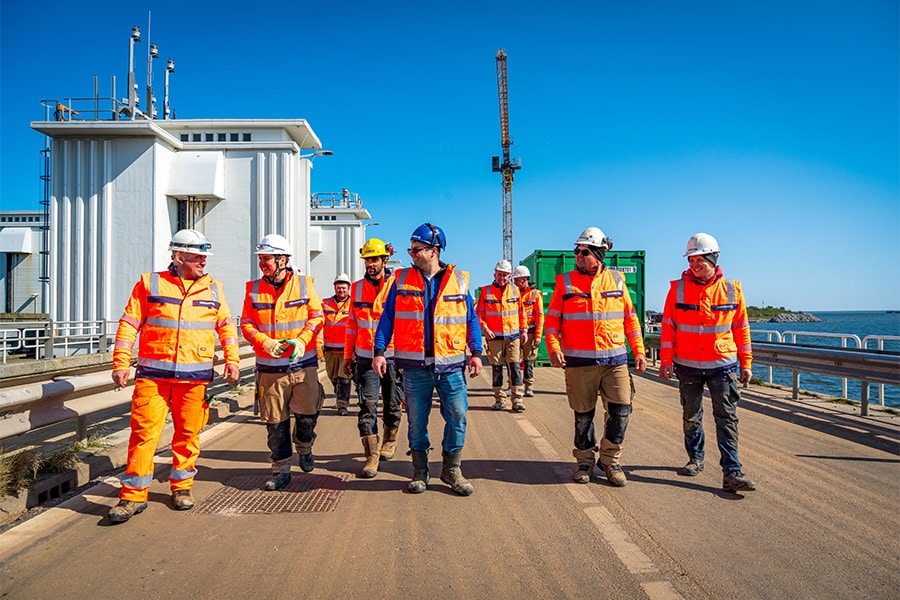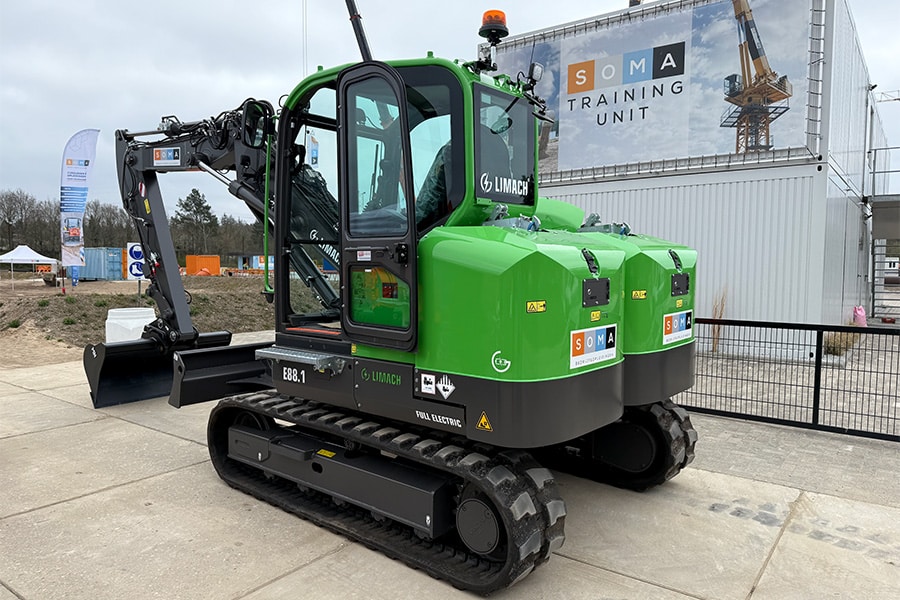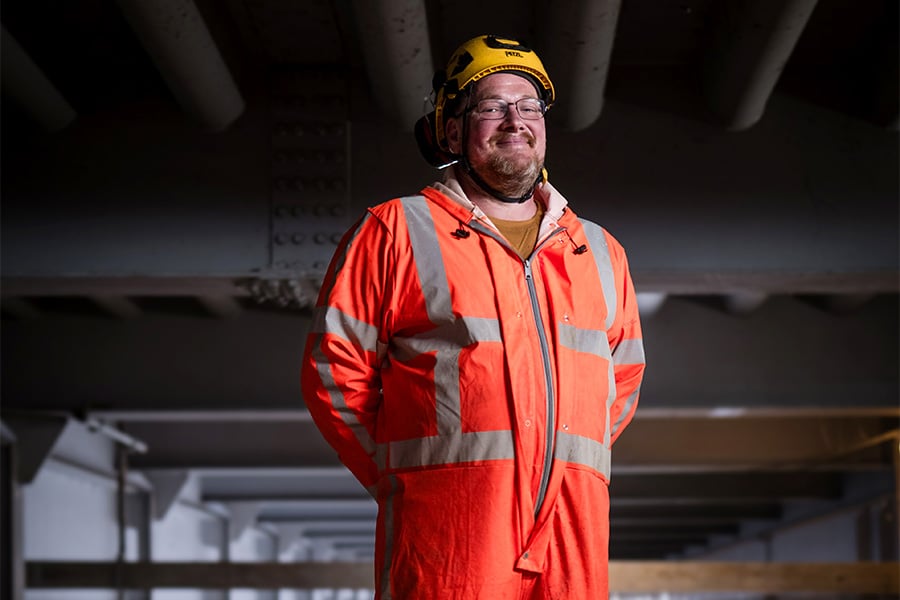
Construction & Infra, influx and retention of skilled workers
Construction and infra is a wonderful industry. A sector that is eager for personnel. In order to make it easier to recruit new people and retain current employees, the parties to the Construction & Infra collective bargaining agreement launched the program 'Construction & Infra, influx and retention of skilled workers' in 2021. An important part of this program is a focus on vocational training, which is essential to the sector but in danger of disappearing. And there is more.
The reason for setting up the program was that the construction and infrastructure sector noticed that more attention needed to be paid to the inflow and retention of skilled workers, says Henk Hanssen, project leader for Training at the Construction & Infra program, inflow and retention of skilled workers. "There were lots of signals and also some activities from different organizations, but there was a lack of a coordinated approach. Reason enough to put our heads together with a number of parties, release funds and bring everything under one umbrella. A program manager was appointed who worked with the industry to develop a program line and plan of approach. To then accelerate this, coordinators and project leaders were appointed."
From the program line and plan of action, three focal points have been formulated, says Maaike Westerbeek van Eerten, Switchers project leader at the Construction & Infra program, influx and retention of skilled workers. "These are the themes of education and training, communication and walking ability."
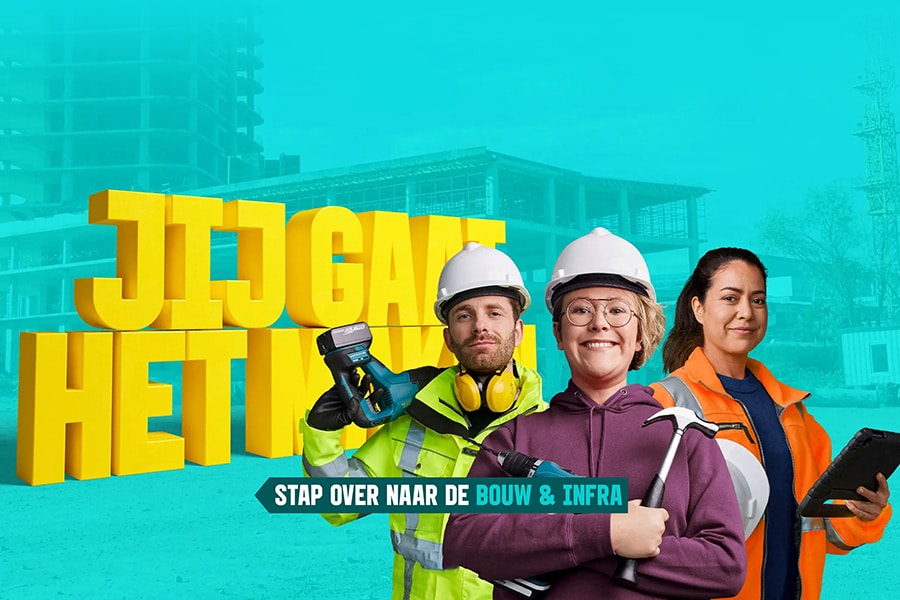
You are going to make it
Maaike continues: "With communication, we focus on the visibility and findability of the sector. In addition to regular communication about our activities and deployment at relevant trade fairs, we also deploy campaigns in this regard. An example of this is the 'You're going to make it' campaign that has been embraced and followed by almost the entire sector."
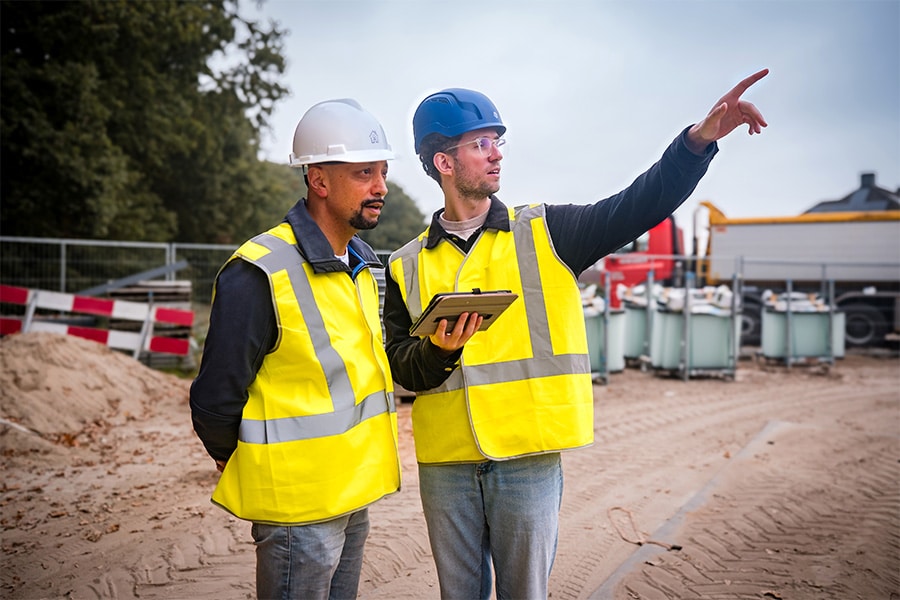
Education and training
Until recently, there was no total overview of the available training supply in the Netherlands, and in the construction and infrastructure sector, according to Henk, there was no unambiguous picture of which vocational courses are essential to the sector. "Let alone that they were findable and accessible for youth and switchers. The program initially selected vocational training programs that collectively said 'that's what we're going to invest in.' These vocational training programs together form the industry qualification structure (BKS). With that, a first big step has been taken, because everyone is now on the same page. Now we are in the process of making it concrete and operational, with collective bargaining parties having to make a final decision on which vocational courses they consider essential. There is a proposal, but the exact details of BKS still have to be determined by collective bargaining parties. That will be finalized in the course of this year," Henk expects.
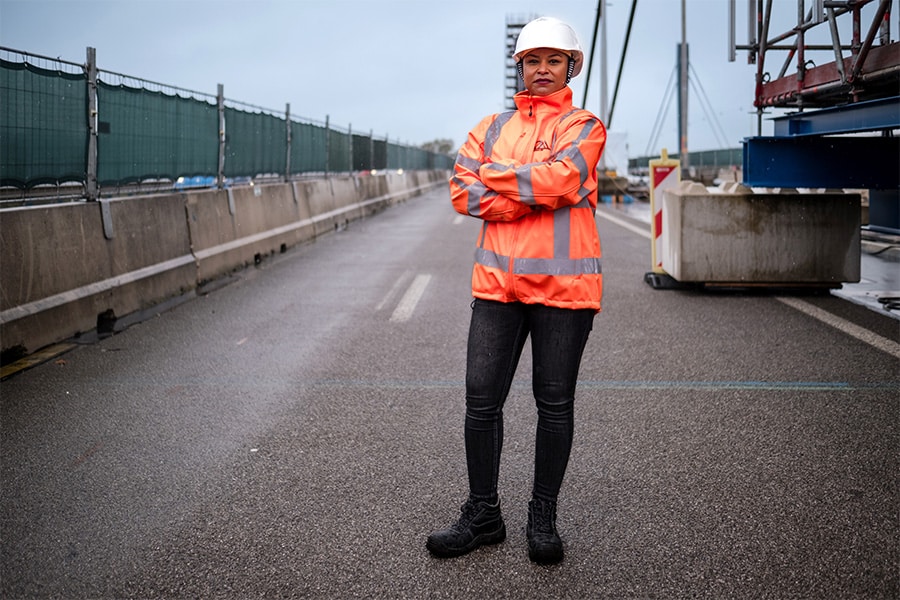
From rebar worker to beam man
The statutory qualification structure (KS) is important and forms the basis, but some vocational courses that are part of the KS are under pressure. This is a given. "For example, the courses in concrete drilling or reinforcing steel processor are a regular part of the KS funded by the Ministry of Education, Culture and Science, but there are no or far too few entrants," Henk notes. "As a result, educational institutions can no longer offer these vocational courses (too costly, among other things, ed.) with the result that the ministry no longer provides money for them and they thus threaten to disappear. This, while they have been identified by the sector as essential. We cannot do without rebar workers because then, for example, bridges and viaducts will no longer be built. And that applies to so many more professions and training, which do not appear in the legal qualification structure, but which have been identified by the sector as essential. Think well driller, drilling superintendent, crane operator or beam man on the asphalt paver. The sector is taking its responsibility here and investing in the maintenance, development and provision of learning resources. Preparatory agreements are currently being made with organizations that will offer, develop and implement these training courses. It will soon be up to the sector to perpetuate those agreements."

Walkability
Another area of focus within the "Construction & Infra, influx and retention of skilled workers" program is the walking ability component. "In each province there is a point of contact for both companies, i.e. employers looking for personnel, and potential switchers," explains Maaike. "This component stems from the side-flow project 'from bank to construction' of Bouwend Nederland, which was set up several years ago as a result of the many reorganizations in the banking sector. The idea was that people who are good with numbers could also work well in construction and infrastructure, for example as calculators. We even developed a TV format based on that, which was later woven into the "You're going to make it" campaign aimed at both young people and switchers. We are now pulling it much broader than just the banking sector. "People from other sectors who are interested and want to orient themselves to construction and infra can visit one of the many advisors in the region. They help with that orientation and deploy various facilities ('building blocks') to help switchers get started in the construction and infra sector. The intention is to link as many people as possible to a good education and/or employer in this way."
26,000 vacancies
There is plenty of work to be found in construction and infra. "There are currently some 26,000 vacancies open," Maaike knows. "Due to an aging population and too little intake in schools and training, as well as the social need to build more housing or make homes more sustainable, the shortage has only increased in recent years. The effect of this will only become really worrisome in a year or three when the outflow of retirees picks up steam. That's why we can't start early enough to motivate students and lateral entrants in every possible way for a career in construction and infra."

Structural basis
Demographics are going to force the industry to innovate, according to Henk. "All the more so because in the future we will have to deliver greater production with fewer people. This means that as a sector you have to start thinking now about how we can jointly meet these future challenges if this pressure on the labor market continues. Within the program we are therefore busy with preparatory work to get a grip on the future inflow and to develop training specifically aimed at the challenges and changes that are coming. For this reason, it has been decided that we no longer consider the program "Construction & Infra, influx and retention of skilled workers" as a project. From January 1, 2025, the activities from the program will be continued from a new organization managed by employers and employees. So the program will have a structural basis. And we are all quite proud of that."

Learning at your own pace
Organizations in the construction and infra sector fortunately know how to find each other better and better, notes Maaike. "For example, the 'You're going to make it' campaign is increasingly being used as a binding tool to develop joint initiatives for the influx of potential new skilled workers. There is more and more collaboration. It is also recognized as an industry-wide initiative, initiated by the sector itself. Educators are using it to attract students, for example. The ambition is also to use the walking skills component more widely to retain people, who are working within the industry and want to advance, for the sector." According to Henk, they need to be supported with an appropriate training offer. "The system will have to be designed differently with an emphasis on modularity and flexibility. Because, why should you have to learn things you actually already know? It motivates much more if the knowledge already present is built upon. The Foundation for Professional Competence in the Built Environment already does this and offers modular vocational courses at level. These fall outside the legal framework, but are valued through NLQF classification and are effective. Many adult entrants here follow an individual training path at their own pace."
Providing customization works very motivating, Maaike notes. "People are much more inclined to take their own direction and specifically look for work that suits them and makes them happy. And that is ultimately the goal after all: to get skilled workers into and keep them in this beautiful sector."
